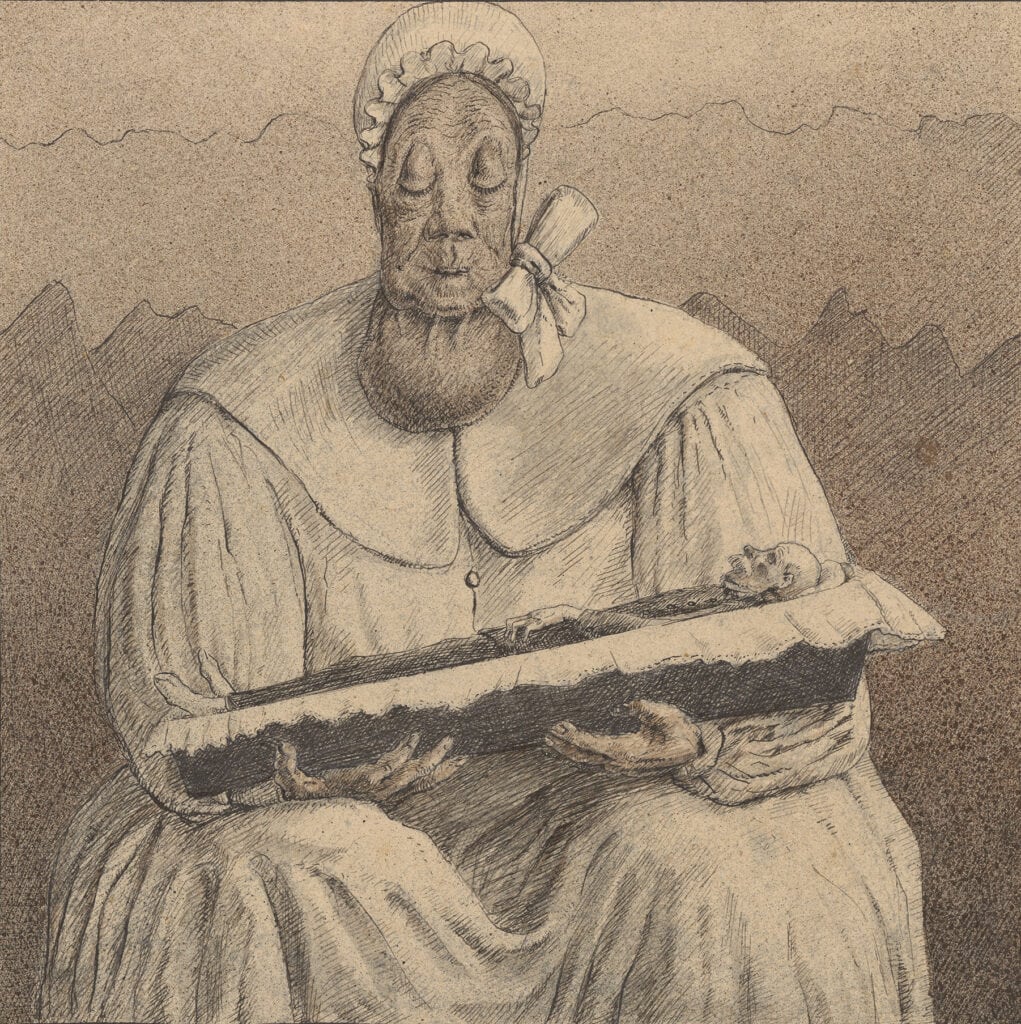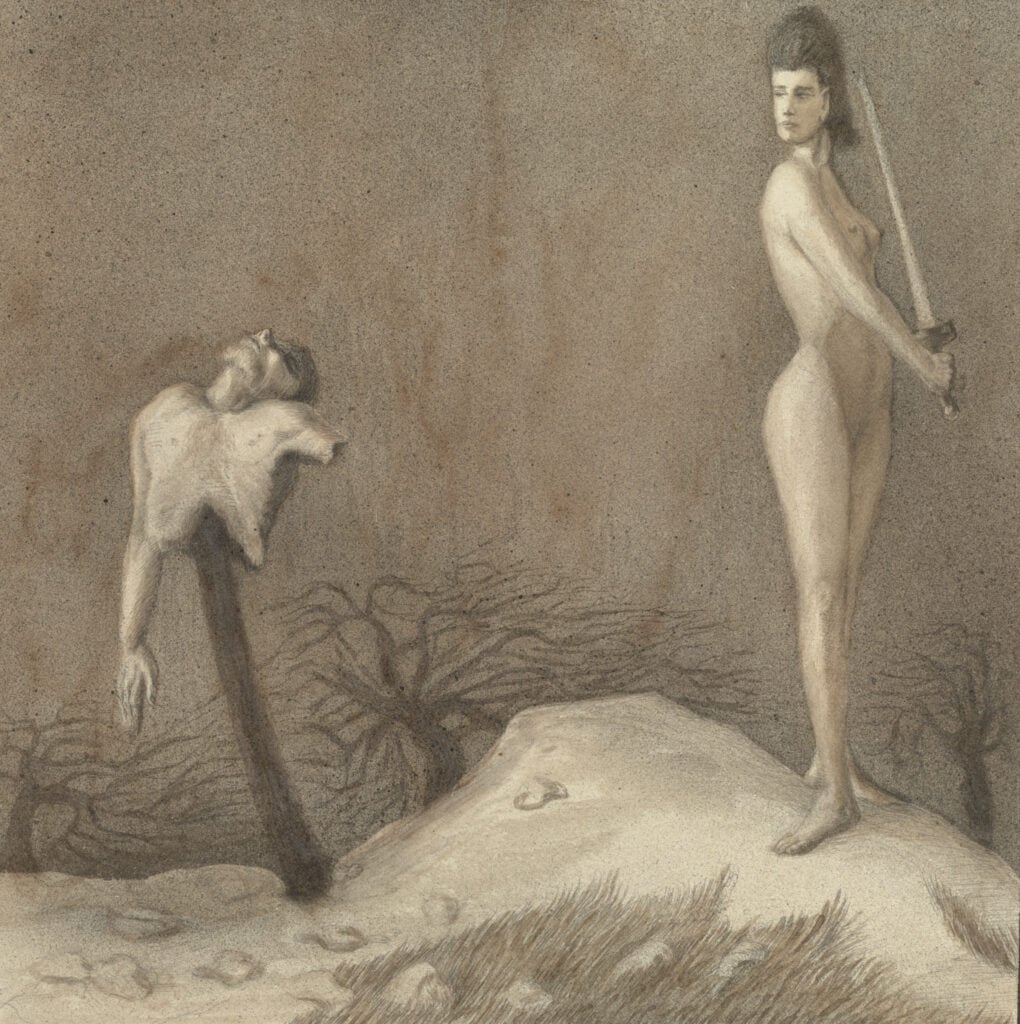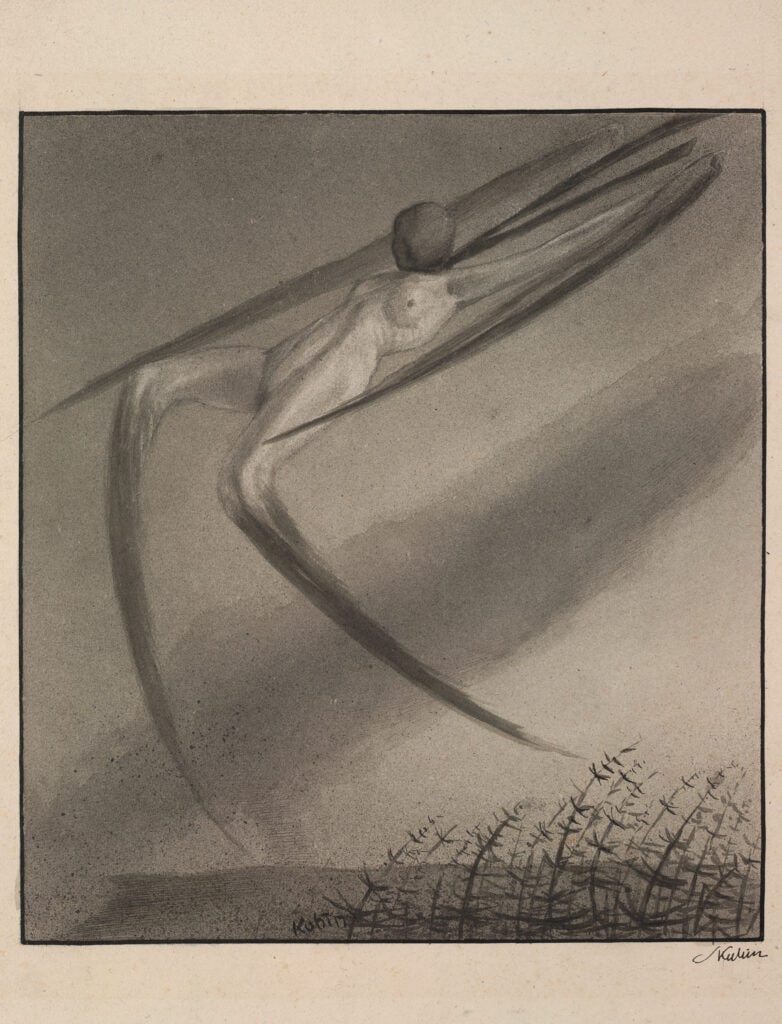The great draughtsman Alfred Kubin shows us the world in the clutches of evil. The exhibition at the ALBERTINA MODERN presents Kubin’s early creative phase from 1899 to 1904 from the ALBERTINA’s collection of around 1800 drawings. 100 works visualise his dark world, in which evil, the frightening and the gruesome prevail.

(1877-1959), a loner and individualist, created a body of work characterised by deep mental anguish. His paintings, which often depict oppressive dream worlds, reflect dark visions of the modern soul. Kubin drew fantastic creatures, grotesque grimaces and threatening scenarios in which sexual fears, obsessions, agonies and the feeling of being at the mercy of others dominate. These themes expose the secret drives and fears of the human psyche, which were investigated by Sigmund Freud in his time.

Uncompromising openness and a departure from traditional iconography
The exhibition shows Kubin’s uncompromising openness and his rejection of traditional iconography iconography as well as the diversity of his graphic oeuvre. In his early works, Kubin prophetically captures the tensions of the 20th century: The dissolution of the individual in the masses and the lonely individual thrown back on himself, unable to find his place in the modern world. He himself suffered from the advancing scientification, mechanisation and bureaucratisation and felt that he belonged to the past.
His youth was characterised by strokes of fate such as the death of his mother, an insurmountable fear of failure and depression, which ultimately led to a failed suicide attempt – events that significantly influenced his pictorial inventions.

His aesthetic is dark, oppressive, evil. It lends his pictures a quality that shakes the viewer and at the same time confronts them with their own humanity. Kubin felt overwhelmed by the burden of life and the inevitability of death – a fascination that is reflected in his intense preoccupation with the end of life as a pictorial theme.
He also repeatedly depicted women as femme fatale, as seductresses, demons devouring men and threatening messengers of death. He feared women, their sexuality, their bodies – the advancing emancipation frightened him. Particularly influenced by Otto Weininger’s book Geschlecht und Charakter, Kubin shows his misogynistic attitude and panic towards women.

His early work shows an abundance of fantastic and grotesque depictions of animals, metaphors of animal instincts and human crudeness. These works, which were created in line with his pessimistic world view, reflect a gloomy view of human existence.
Between autobiographical commentary and epochal diagnosis
Images of horror, demons and destruction never left Kubin until the end of his life in 1959. It is reported that his pastor said at the end of his life: “Without his fears, he would be robbed of his existence.” Kubin’s art moves in the tension between autobiographical commentary and epochal diagnosis. It remains an important testimony to the inner abysses of man and his fears, which are both personal and universal. His paintings reveal the torments he experienced and show a world in which man views himself and his surroundings with horror and fascination.



iThere are no comments
Add yours